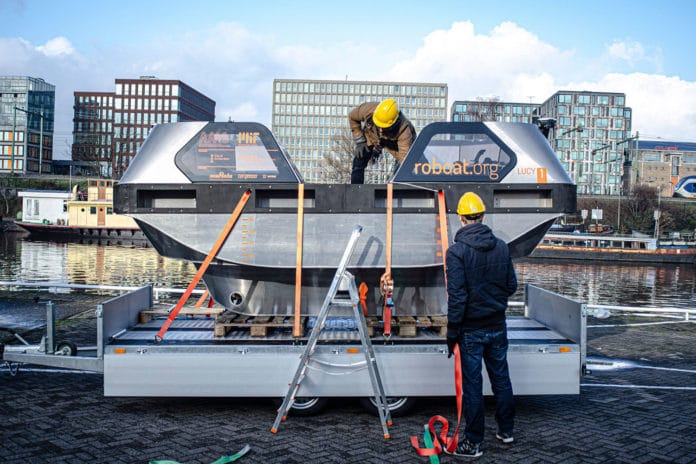Over the past six years, researchers from MIT’s Computer Science and Artificial Intelligence Laboratory (CSAIL) and the Senseable City Laboratory have been working on the world’s first fleet of autonomous robotic boats, the ‘Roboat,’ to deploy in the city of Amsterdam. Last year, the team released their half-scale, medium model that was 2 meters long and demonstrated its promising navigation skills on a three-hour round trip along Amsterdam’s canals.
The CSAIL team has now introduced a full-scale, fully autonomous robotic boat that can comfortably carry up to five people, collects waste, deliver goods, and provide on-demand infrastructure. The newly introduced Roboat is controlled by the same navigation tech involving LiDAR, GPS, and a suite of cameras to build a 360-degree picture of its surroundings. The boat autonomously decides on a safe route from A to B while continuously scanning the environment to avoid collisions with objects, such as bridges, pillars, and other boats.
The data collected by the sensors are fed to control algorithms that function a little like a coxswain giving orders to rowers by translating a given path into instructions toward the thrusters, which are the propellers that help the boat move.
“We now have higher precision and robustness in the perception, navigation, and control systems, including new functions, such as close-proximity approach mode for latching capabilities, and improved dynamic positioning, so the boat can navigate real-world waters,” says Daniela Rus, MIT professor of electrical engineering and computer science and director of CSAIL. “Roboat’s control system is adaptive to the number of people in the boat.”
The current Roboat has futuristic looks with its black and grey design with two seats that face each other. It is fully electric with a battery that’s the size of a small chest, enabling up to 10 hours of operation, and can be recharged wirelessly. The Roboat can autonomously perform its tasks round-the-clock, but an onshore operator will monitor it remotely from a control center. One operator can monitor over 50 Roboat units, ensuring smooth operations.
The team has already deployed two full-scale Roboats in Amsterdam and is now planning public trials of the technology.
“The historical center of Amsterdam is the perfect place to start, with its capillary network of canals suffering from contemporary challenges, such as mobility and logistics,” says Stephan van Dijk, director of innovation at AMS Institute.
